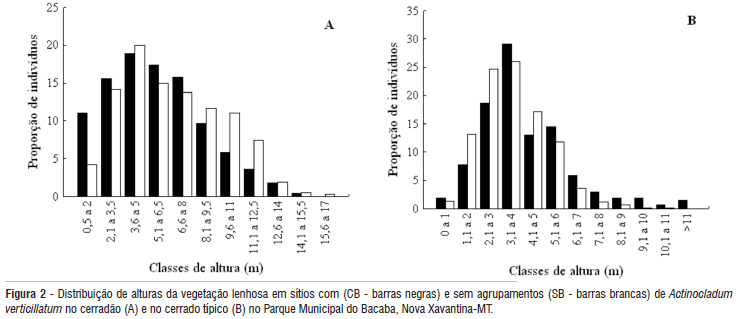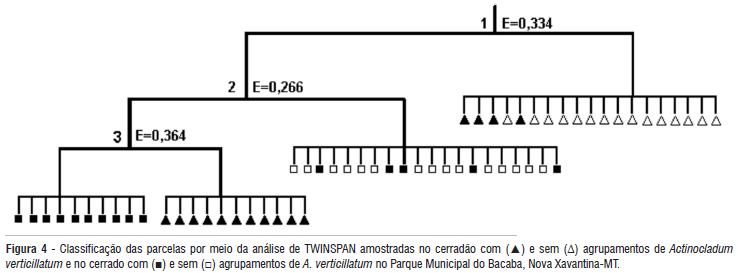This study evaluated the effects of a Cerrado native bamboo species (Actinocladum verticillatum) clumps on the floristic composition, diversity and structure of the woody vegetation in two adjacent areas of “cerradão” and typical “cerrado” in the Bacaba Municipal Park, Nova Xavantina, state of Mato Grosso, Brazil. Sixty plots of 10 x 10 m were established, 30 in each forest physiognomy. In each physiognomy, 15 plots were placed in a bamboo-free site (SB) and 15 in a site with an estimated bamboo leaf cover of over 90% (CB). All individuals (shrubs and trees) with a diameter at soil height (DSH = 30 cm aboveground) ≥ 3 cm were sampled. Species richness and diversity, floristic similarity, diameter and height distribution, and the species importance value index (IVI) were evaluated. In general, CB sites of both physiognomies had lower values of number of individuals, species, genera, families, density and basal area compared to SB sites, with marked decrease in these parameters in the cerrado in relation to cerradão. Results suggest that the space occupation and reduction of light incidence caused by bamboo clumping affect seed germination and seedling establishment of Cerrado shrubs and trees, selecting more shade-tolerant species and changing the floristic composition and vegetation structure.
bamboo; competition; conservation; community structure; woody species





